At the beginning of the railway era, moving passengers and their luggage trunks was little more than a lottery. Luggage not stored in basically more than a rudimentary goods wagon was lifted onto carriage roofs, strapped down and protected by tarpaulin. Any trunks not securely fastened might tumble off and be lost in transit, much to the mortification of passengers when they alighted.
By the 1870s, the use of railway guards vans—containing floor space for trunks and parcels, and a more spartan area of a fold down seat and desk for the guard—was far more prevalent. The guards van also incorporated a number of compartments for passengers. At first on mainline trains this would be with carriages that had compartment doors opening directly on to station platforms, but the nature of the guards van evolved as they were connected to the rest of the train with side corridors and gangways between coaches. In order to provide secure areas, the luggage area would be fenced off by a metal cage which could only be opened by the guard or other railway officials.
In time there was further expansion of specialist vehicles, without passenger-carrying compartments, that came about according to former National Railway Museum carriage curator David Jenkinson, as ‘the natural outcome of the sheer volume of luggage which, increasingly, during late Victorian and Edwardian days, the ever-growing numbers of passengers wished to take with them on their journeys.’
For rail (and sea passage), this group of secure specially named railway carriages were key to successful conveying passenger trunks and personal possessions. Vehicles known as full and corridor brake carriages, baggage cars, general utility vans, or as in France fourgons, carried luggage based on designs and formats that varied according to individual railway company practice.
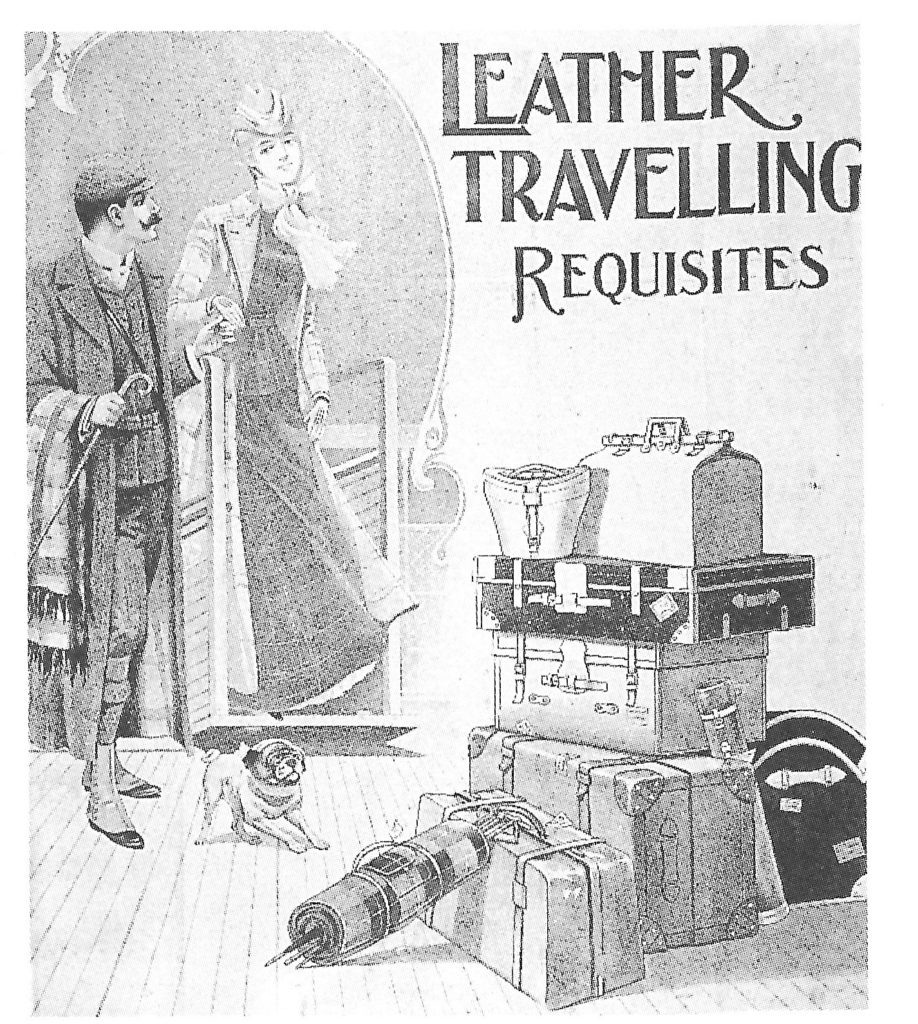
The movement of passenger luggage was linked to a fast-developing 19th-century travel and tourism industry; something railways were well-placed to develop. Railway companies were adept managers of the passenger luggage process, allowing travellers to forward-plan individual requirements. At stations carefully labelled luggage could be left in advance of travel. This then could be put on a train ahead of departure or alternatively placed on the train on the day of travel by guards who ensured personal possessions arrived safely at the destination with the traveller. Passengers simply collected their luggage at journey’s end or arranged to have it delivered to where they were staying by the railway company.
In Britain, many hotels were to become owned by the railways or managed by external partners, as indeed hotels where railways had financial or commercial interests. Invariably they were all strategically located close to stations. Hotels located further afield would be, by the early 20th century, serviced by motorised omnibuses or charabancs which were again owned by or linked to railway companies which greatly facilitated the movement of passenger luggage.
Pre-grouping companies such as the Great Western Railway in Cornwall, the Great Southern and Western Railway of Ireland around the Lakes of Killarney, the Midland Great Western Railway of Ireland in Connemara, and the Great North of Scotland Railway were expeditious pioneers of this new tourist related business. The concept was simple; manage the guest’s aspirations, possessions and luggage. Yet the tribulations of ‘engineering a large family’ for an 1890s holiday was duly noted.
Travel and holiday planning were part of a new-wave industry attracting the attentions of specialist organisations. While the story of Thomas Cook is well told, there were other firms such as Pickfords Travel who were established in the early part of the 20th century. Pickfords included a separate connected business for the cartage of passengers’ advanced luggage to Victoria and other main London stations. This was a new outlet for which the company received a business commission. Wrapping this around the issue of railway tickets was sound thinking. During this period the first suitcases appeared. They were far easier to handle than the cumbersome trunk. Suitcases were ideal for short trips for those travellers not requiring substantial outfit changes. Classy new styles of luggage though attracted unwanted eyes. In September 1905 the press was awash with reports of luggage theft.
“Londoners returning from their holidays are complaining loudly the constant thefts of luggage. The thefts have taken place even when the luggage has been sent on in advance, and the railway companies are meeting with heavy claims from defrauded individuals. In some cases, it is almost evident that the thieves have friends engaged in handling the luggage, because articles are often abstracted from a trunk, and the remaining contents, usually the least valuable, are allowed to proceed to their destination. The thieves go so far as to take articles out of cases, and then return the cases the bag or trunk. This presupposes that the railway thieves must have time to commit their depredations.”
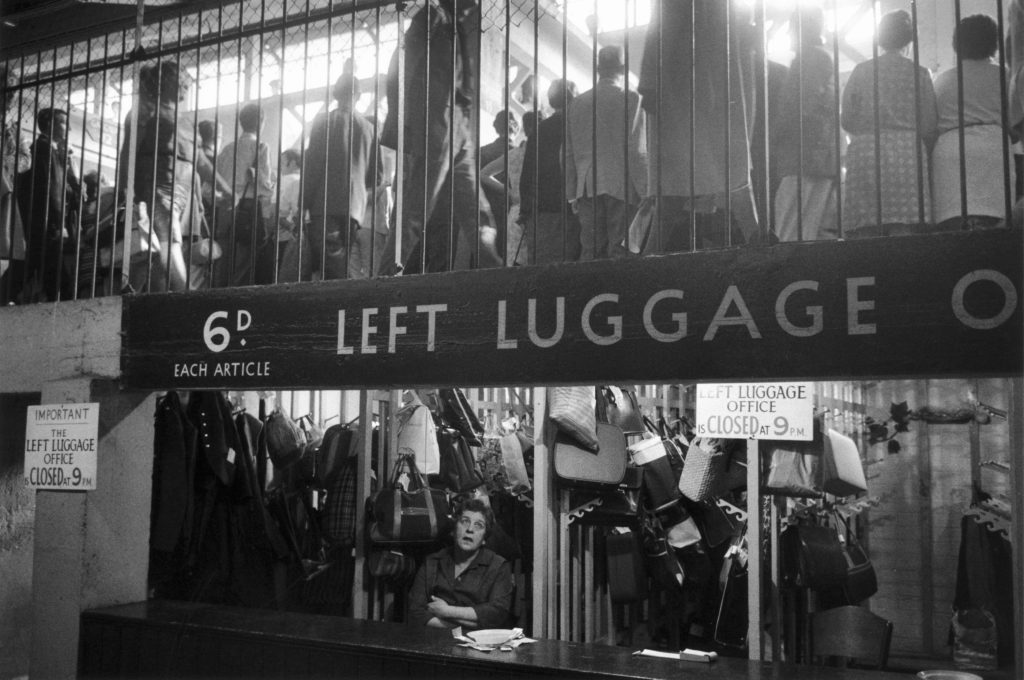
Into this mix could be added left luggage and baggage storage for which railway stations were ideal. For couples or family groups, the opportunity of being able to leave luggage in secure and manned facilities safely for just a few hours or for longer periods was a tremendous traveller enhancement, especially for passengers waiting for a train at a main station terminus that could be several hours later. For passengers with a minimal amount of luggage such as an attaché, brief case or small suitcase, convenient self-service locker facilities emerged at mainline railway stations. The ability to kill time and enjoy, say the capital’s sights, for a few hours unencumbered by luggage was an invaluable service that really aided the convenience of travellers.
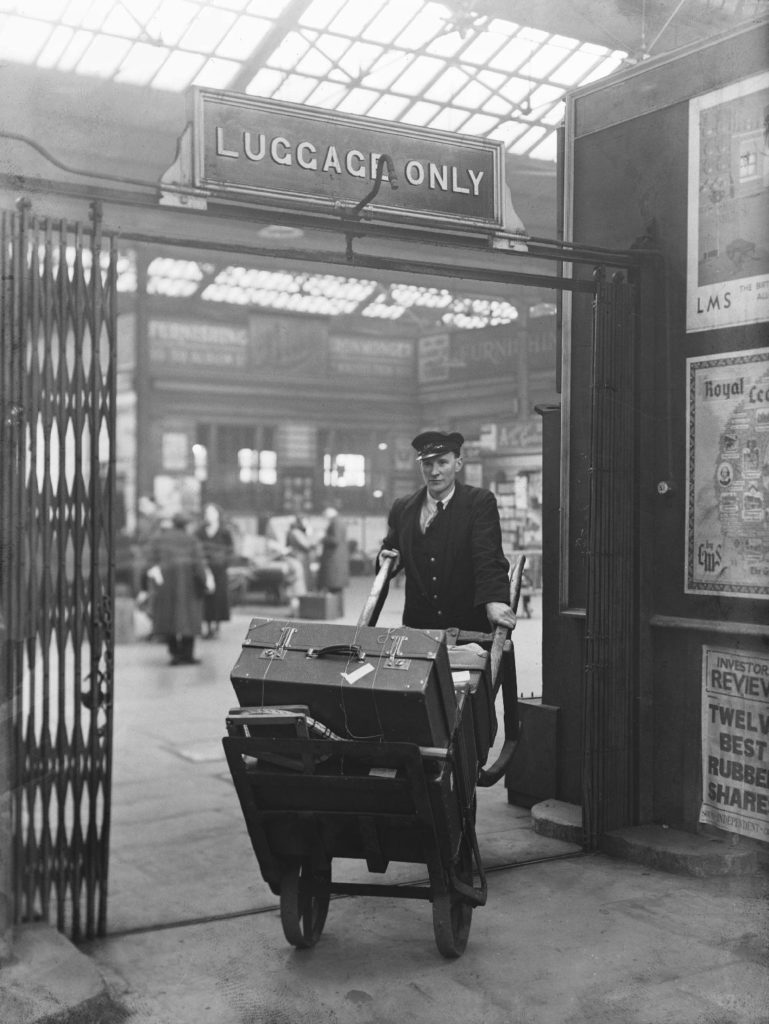
As a result, the management of passenger luggage became a key part of the railway company’s remit. Railway porters strolling along station platforms with their trucks were familiar sights. For passengers not wishing to leave their luggage to the safety of the railway company, carriage compartments with special overhead racks provided perfect sanctuary.

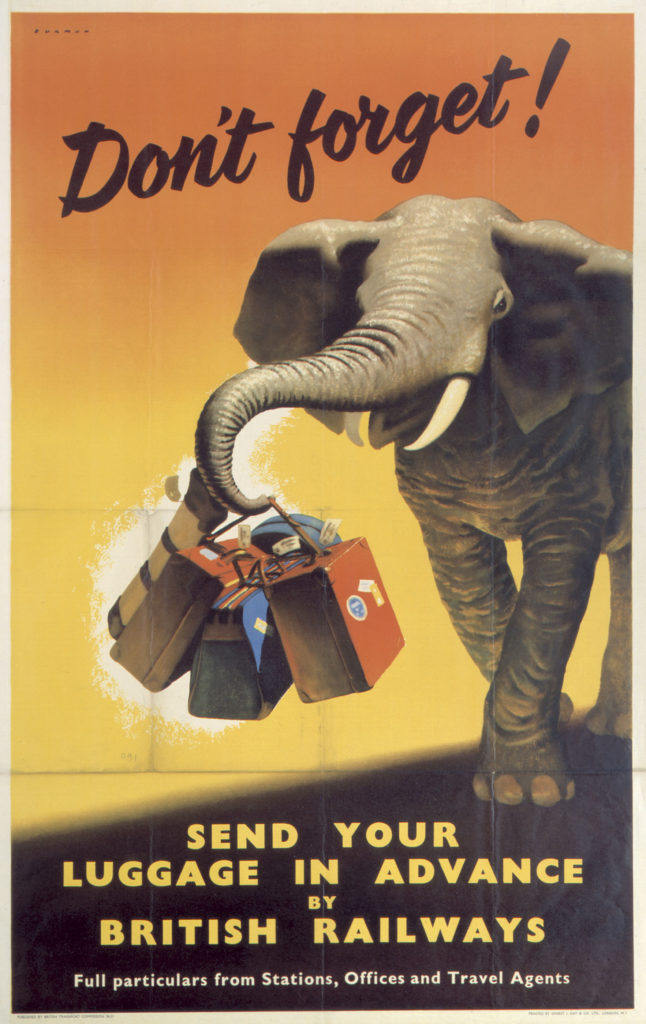
The first-class compartment provided ample opportunity for passengers to declare their status in life. Having luggage that had many travel and destination labels attached to it was one such statement. Edwardian traveller and essayist Max Beerbohm once wrote: ‘Travelling in a compartment, with my hat-box beside me, I enjoyed the silent interest which my labels aroused in fellow-passengers.’
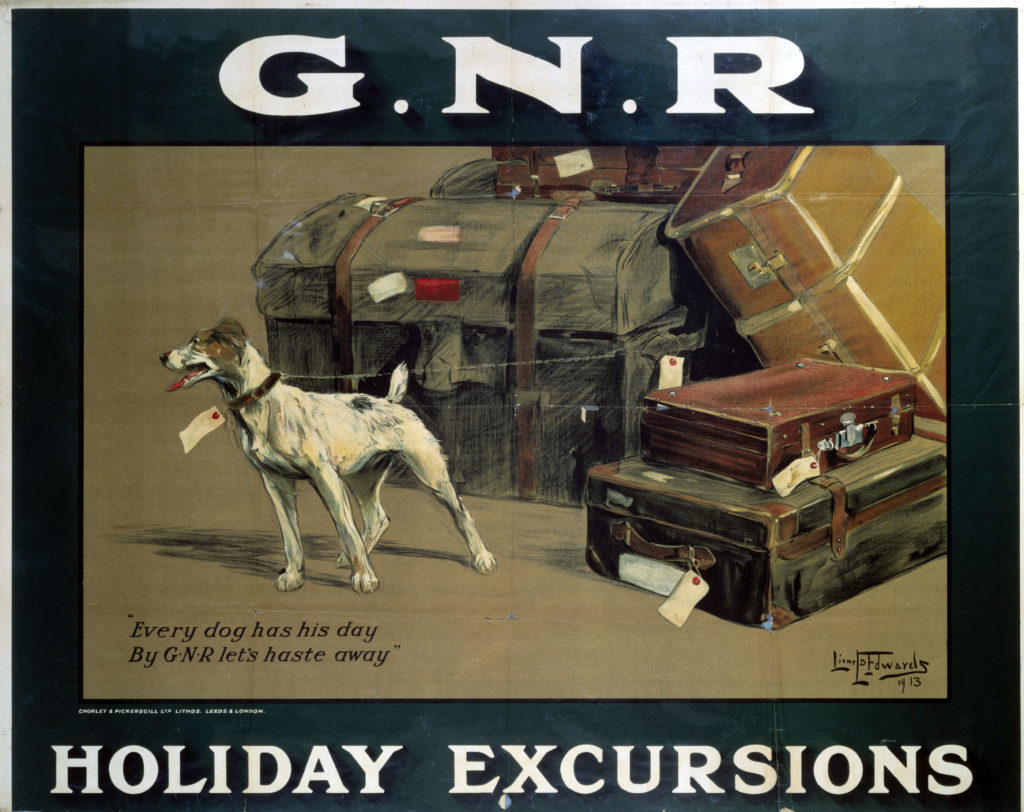
The Scotch Express, a short book written by American author Stephen Crane, reflected his experiences of British life. Crane concluded: ‘If one stands at the gate in August particularly, one must note the number of men with gun-cases, the number of women who surely have Tam-o’-Shanters and plaids concealed within their luggage, ready for the moors.’ (Crane.) These scenes portrayed a certain kind of England to American readers. Some companies tapped into this niche by creating specialist services for the conveyance of ‘sporting equipment’ such as guns, fishing tackle and dogs. The August 12th season, accompanied by London society’s annual exodus, was big railway company business.
Yet surprisingly travelling by train in America was not always the easiest of tasks, particularly for women with accompanying hand luggage or grips as referred to by Americans. Whilst at the latter end of the Gilded Age, the country was acknowledged as the home of service culture with many luxury hospitality driven enterprises catering for the needs of a new wealth elite, this did not always extend to the utilitarian nature of the railroad station where the safe movement of personal possessions could not always be guaranteed.
One area where railway companies (and shipping lines) held a significant advantage over a burgeoning civil aviation sector was in the amount of luggage that could be carried. By the 1930s travelling in style became de-rigueur, refined luggage was a status symbol, part of a sense of individual style, and just as important as personal appearance. Louis Vuitton was the real trailblazer some 50 years before creating a trend whereby the carrying of clothes was given as much credence as presence and the clothes one wore.

For those travellers still attached to the traditional trunk they became smaller, lighter and finished in high quality materials such as leather, but it was to be the convenience of the suitcase in its many guises that came to dominate. Luggage and the many forms of carrying cases were now considered fashion statements. Specialist firms spun their ‘creative craftsmanship’ interpretations and in so doing dovetailed their ‘luggage extensions’ into an increasingly sophisticated and connected transport travel genre enveloping ‘trains, boats, planes and automobiles.’ From a business perspective this was all neatly packaged into the profitable portfolios of progressively dominant luxury brands, and something clearly illustrated in period advertising and imagery.
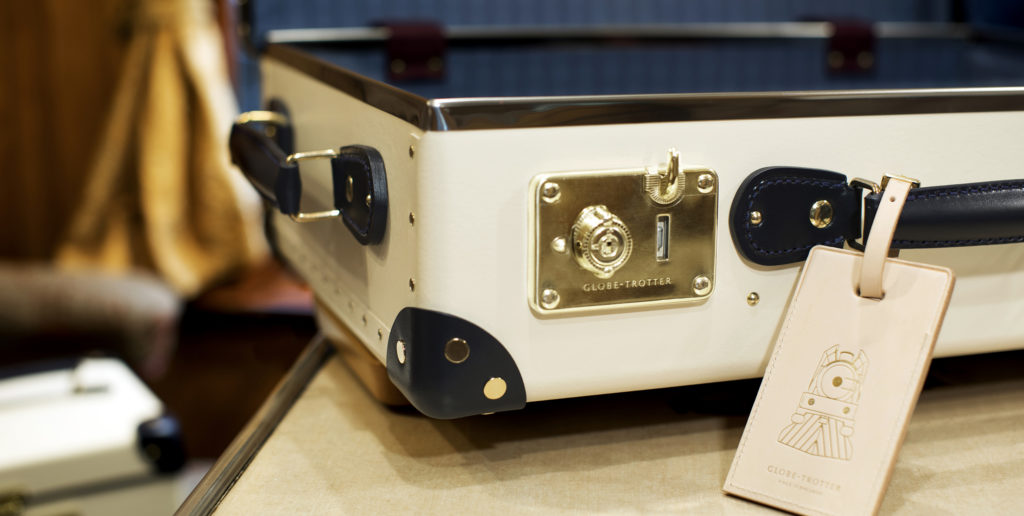
Little wonder railway companies should latch on to such marketing-connected opportunities since in the inter-war years they had invested in powerful new steam locomotives and luxury carriages providing speedier services around Britain. The conveyance of first-class passengers adorned with stylish luggage was certainly not to be overlooked. On the east coast Anglo-Scottish mainline, the LNER used the ultra-modern image of A4 streamlined locomotives for Flying Scotsman luggage labels. They were highly effective advertising forms, mini creative translations of larger railway travel posters, that helped to develop the Scotsman brand heritage and a move continuing into British Railways days mixing a combination of modernity together with nostalgic representations that last to the current day. Similarly, the Queen of Scots Pullman was given the full marketing treatment with stylish luggage labels. This extended to early British Railways days with Irish Mail luggage labels celebrating the centenary of the ‘Oldest Named Train in the World’ in 1948.

The Southern Railway’s Atlantic Coast Express, a Waterloo to North Devon and Cornwall service introduced in 1927, possessed a unique carriage composition to carry luggage. The first-class train gave an impression of travelling in a parcels train made up of a large number of brake composite carriages accommodating space for the guard’s compartment and masses of passenger luggage necessary. The train simply split at stations en route for various coastal holiday resorts. It was a fast and efficient deluxe train service; first-class passengers never had to worry about precious holiday luggage or think about changing coach or train before reaching their desired West Country destinations.
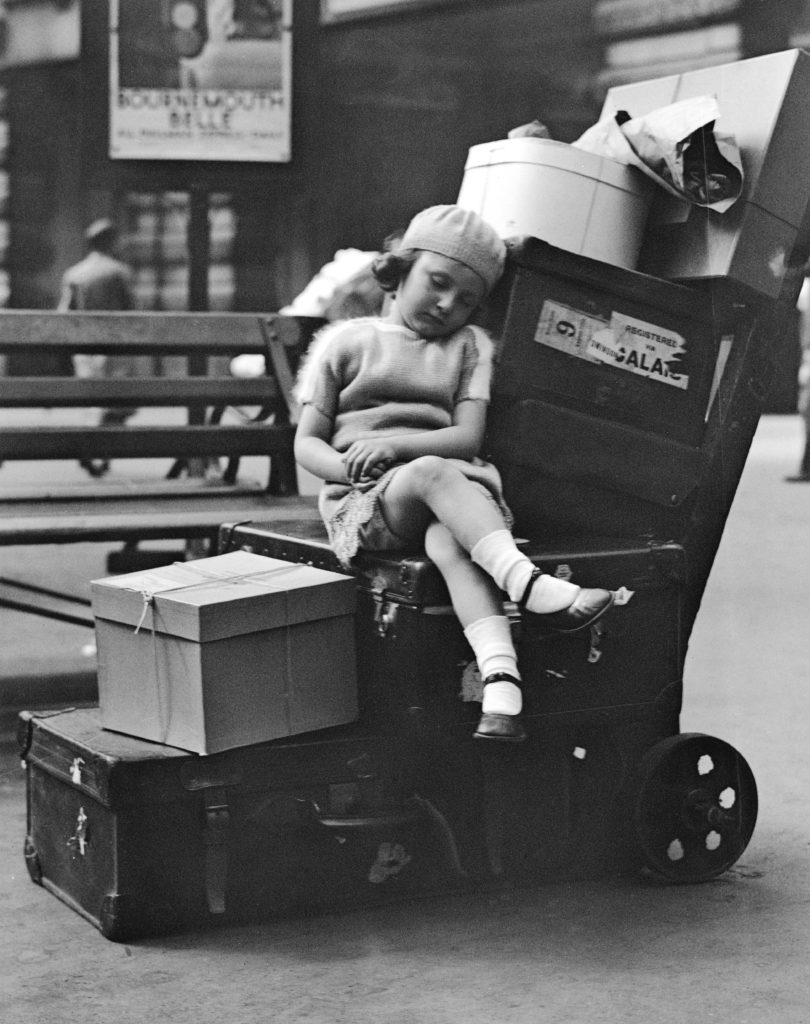
On the south coast the new Brighton Belle electric Pullman train was all the rage, with its motor brakes at each end of the train, contained four large electric motors each sufficient to power the heavy train. But they still combined sufficient space for luggage compartments—passengers were still known to travel with heavy trunks and masses of suitcases even in the 1930s!
References:
Jenkinson, D. (1988), British Railway Carriages of the 20th Century, Volume 1: The end of an era, 1901 -22, London, Guild Publishing
Max Beerbohm (1909), Yet Again, London, Chapman and Hall
Stephen Crane (1899), The Scotch Express, https://public.wsu.edu/~campbelld/crane/scotch.htm
© Martyn Pring and Shamrock Media Productions Ltd, 2020
Header image courtesy of Globe-Trotter.

Very interesting article, which I found whilst researching my family tree. My great-great-grandfather was a railway porter in Peterborough in the 1850s. I know this because his occupation is referred to in his insolvency notice (he ended up in the workhouse). Perhaps porters weren’t paid very well!
This is very interesting. I am looking for information on the local youngsters at seaside resorts emerging because of new rail links in the 1800s. The young boys built makeshift trolleys and begged for custom transferring luggage from trains to boarding houses. Can you direct me to any research on this topic please. There may not be any. Thank you Dianne Roberts
I was at a boarding school in Somerset from 1954-1964, to which a trunk was sent, by PLA (Passengers’ Luggage in Advance) before the beginning of each term containing all my clothing needs, for daily life and sports for about 12 weeks. My family home was in the home counties and I followed the trunk by train from Paddington. The train was called by the boys who took it, the ‘Paddy Puffer’, the ‘Hogwart’s Express’, long before Harry Potter. I am researching those years of my life and would welcome memories of any men of my generation who went to boarding school in those years, about PLA. I was born in 1946
Hi Peter. I’m a couple of years younger than you and the school was in Hampshire but I well recall my trunk being sent on by PLA and me travelling back to school by train with the other boys at the start of term. I was reminded of it recently when I came across an old school report stating at the bottom: “Next term begins Tuesday 2nd May. School train leaves Waterloo at 4.20 pm.” Strangely, I have no memory of the return journey at the end of term – do you?